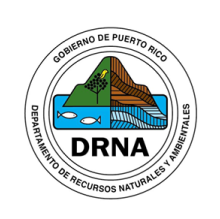Estudio sobre la integración de estrategias para la adaptación y el desarrollo de resiliencia en la planificación de usos de terrenos
The governing document of the Coastal Zone Management Program (PMZC), approved in 1978, is the coastal component of the Puerto Rico Land Use Plan (PUTPR). The Department of Natural and Environmental Resources (DRNA) through the Coastal Zone Management and Climate ChangeClimate changeRefers to the long-term changes in the Earth’s climate that are warming the atmosphere, ocean and land. Climate change is affecting the balance of ecosystems that support life and biodiversity, and impacting health. It also causes more extreme weather events, such as more intense and/or frequent hurricanes, floods, heat waves,... More Program, manages the PMZC in coordination with the Planning Board (JP). The PMZCPR has the main purpose of expanding, refining and improving state and federal government programs that are aimed at managing the issues associated with the coastal zone, so that they respond effectively to coastal problems. It has been 39 years since the approval of the PMZC and new challenges have emerged, particularly those associated with climate changeClimate changeRefers to the long-term changes in the Earth’s climate that are warming the atmosphere, ocean and land. Climate change is affecting the balance of ecosystems that support life and biodiversity, and impacting health. It also causes more extreme weather events, such as more intense and/or frequent hurricanes, floods, heat waves,... More. Therefore, it is necessary to examine existing public policies and land-use planning tools to ensure that they effectively direct the development of public and private property on the coast. Recognizing this need, the DRNA commissioned the Study on Integrating Strategies for Adaptation and ResilienceResilienceIs the capacity of a community or environment to anticipate and manage climate impacts, minimize their damage, and recover and transform as needed after the initial shock, with minimal impact to social well-being, economic activity and the environment. More Building into Land-Use Planning. Adaptation options based on land-use planning are those that use planning laws and regulations to reduce vulnerabilityVulnerabilitythe extent to which a system is able or unable to cope with the negative effects of climate change. It depends on exposure, how susceptible that system is to certain climate hazards, and its ability to adapt. More and increase resilienceResilienceIs the capacity of a community or environment to anticipate and manage climate impacts, minimize their damage, and recover and transform as needed after the initial shock, with minimal impact to social well-being, economic activity and the environment. More to the effects of climate changeClimate changeRefers to the long-term changes in the Earth’s climate that are warming the atmosphere, ocean and land. Climate change is affecting the balance of ecosystems that support life and biodiversity, and impacting health. It also causes more extreme weather events, such as more intense and/or frequent hurricanes, floods, heat waves,... More (NCCARF, 2016).
